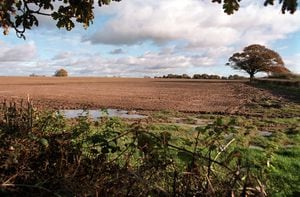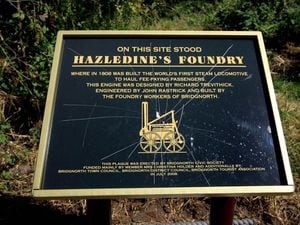Shropshire's visitor from outer space a rare gem
They are visitors from outer space, evidence of their arrival rarely being uncovered.
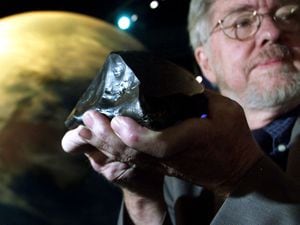
Which is one reason why Shropshire's Rowton meteorite, which was found so quickly that it was still warm, is such an enduring gem for scientists. Another is that it is the only siderite – iron meteorite – known to have fallen in Britain.
In April the county was the epicentre of a big meteorite hunt after a spectacular fireball was spotted streaking across the night sky, with experts believing fragments may have fallen south of Shrewsbury. However, so far no confirmed pieces have been found.
But turn back the clock to 1876 and Shropshire received a gift from the heavens which is so important that little bits of it have been shared with experts worldwide.
Let's turn to Dr Natasha Vasiliki Almeida, who is Curator of Meteorites at the Natural History Museum in London – where the Rowton meteorite is part of the collection, albeit not on display – to explain its significance.
"The Rowton meteorite fell on April 20, 1876, as a single stone of 3.5 kg," she says.
It has since been sub-sampled for research, which is why the photograph of it shows a cut surface.
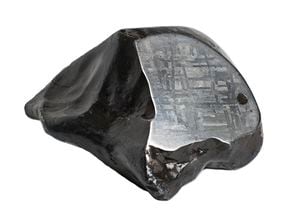
The museum has a cast of it as it was originally.
"It is very significant as a historical fall. Falls, that is, meteorites seen to come through the atmosphere and recovered soon after, are especially important for research because they have been subjected to less weathering or alteration in the terrestrial environment, as opposed to ‘finds’ which are simply found on Earth, having been on the surface for some time and potentially rusted and so on.
"In fact, of the 69,504 known meteorites, as of April 29 this year, only 1,217 are confirmed falls, and of this only 49 are iron meteorites. So from a numbers perspective, it’s rather rare!
"It’s also significant having fallen in the UK, especially at a time when meteoritic research was in its infancy.
"The UK has only 17 meteorites, plus two others reported in the 17th century, but of which we have no material to confirm. Of those 17, Rowton is the only iron meteorite.
"The most recent fall was in the Cotswolds on February 28, 2021 – you might have seen the reports in the news when scientists from around the UK went to search for the meteorite having determined the fall location from footage taken by the meteor camera network. Excitingly, we will be showing a piece of the meteorite, which is now known as Winchcombe, and talking about our research at the Royal Society Summer Science Exhibition in July this year.
"Anyway, back to Rowton. It’s an iron meteorite, composed predominantly of iron-nickel alloys, kamacite and taenite. The patterns on the cut surface show the interleaving of metal crystals, structures only possible because of the very slow cooling of this material in the cores of large parent bodies, which have since been disrupted by impacts.
"These iron meteorites are invaluable to science as a proxy for planetary cores, for example providing insight into how the Earth has evolved, as obviously we cannot sample our own core."
The Rowton specimens at the Natural History Museum comprise one presented by the 4th Duke of Cleveland in 1876, the year the meteorite crashed to Earth on his land, and one which was originally part of the Ludlam collection, and was transferred to the NHM in 1985 when the museum merged with the Geological Museum.
"Although we hold the main mass of the meteorite here at the NHM, there is some material in collections worldwide," says Natasha.
As of the year 2000, these bits of Shropshire's meteorite are 39 grams at the Natural History Museum in Vienna, 29 grams at the University of Copenhagen Geological Museum, 17 grams at Harvard University, 13 grams at the Field Museum in Chicago, 10 grams at National Museum of Natural History in USA (Smithsonian), and 2.5 grams at the Museum für Naturkunde in Berlin.
The dramatic arrival of the Rowton siderite was reported by a contemporary Wolverhampton Chronicle, which said that about 3.40pm on that day in 1876 "a strange rumbling noise was heard in the atmosphere, followed almost instantaneously by a startling explosion resembling a discharge of heavy artillery."
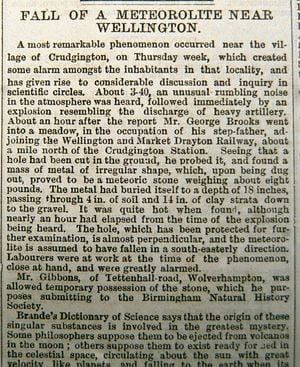
About an hour afterwards "Mr George Brooks, stepson of Mr Bayley, had occasion to go to a turf field in his occupation adjoining the Wellington and Market Drayton railway, when his attention was attracted to a hole cut in the ground.
"Probing the opening with a stick, Mr Brooks discovered a lump of metal of irregular shape which proved to be a meteorite weighing seven and three quarter pounds.
"It had penetrated to a depth of 18 inches, passing through four inches of soil and 14 inches of solid clay down to the gravel – conclusive evidence of the force of its impact with the Earth."
